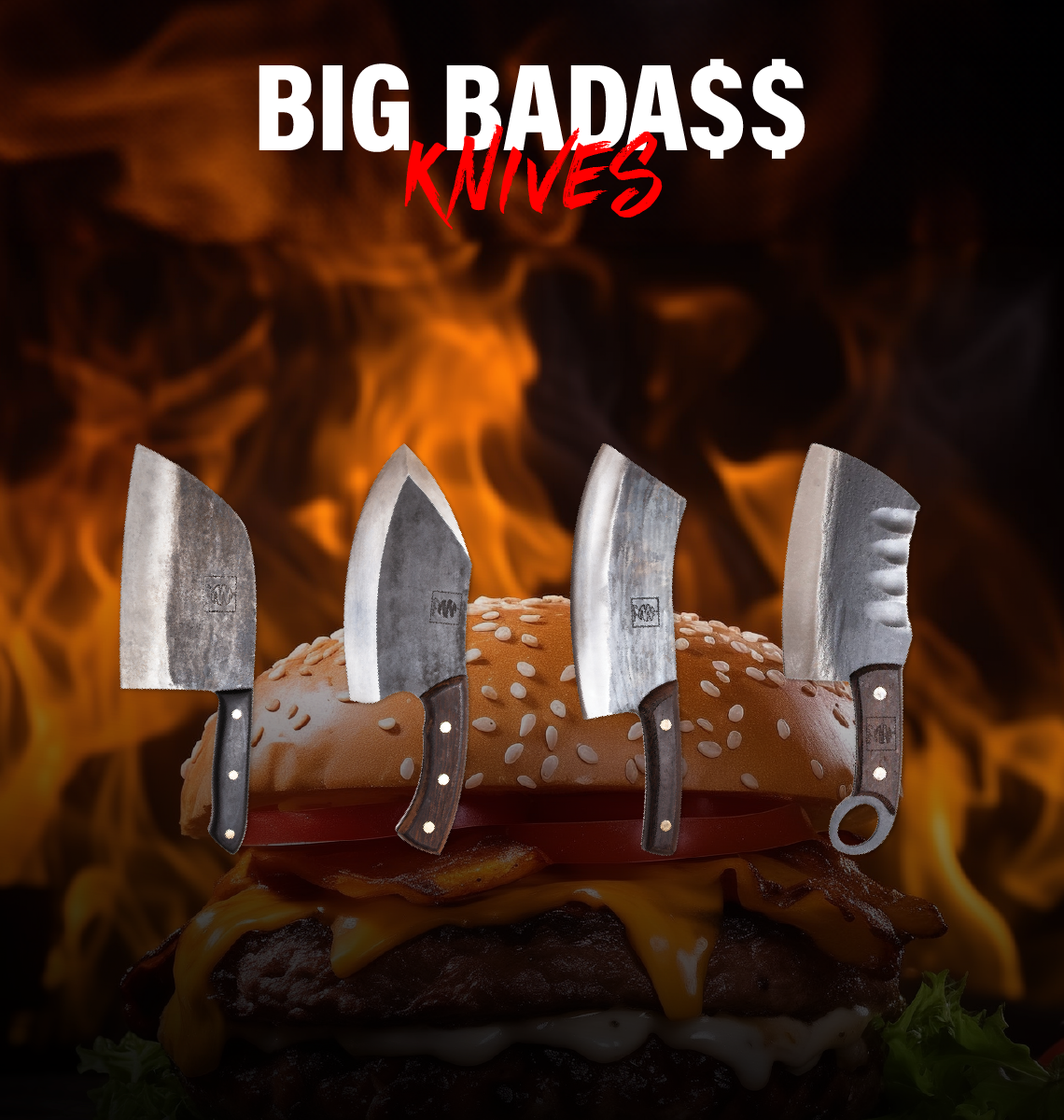What are the best steels for kitchen knives?
As the professional cooking world continues to go towards handmade knives, steel remains as the best material for the blades of kitchen knives. But there are quite a few types of steels out there and it is hard to choose the best one.
Before purchasing a kitchen knife, you better know what the material of the blade is and what it says about the quality of the knife. And don’t worry about the research; we have made the job easy with our list of the best steels for kitchen knives.
Stainless Steel
Probably the most common steel used for kitchenware, especially for kitchen knives. Stainless steel will surprise you with its strength and durability through years of daily use in your busy kitchen.
Stainless steel refers to a wide range of modern steel alloys. All of them contain over 10.5% chromium, which makes the steel very resistant to rust. This is a very important feature knowing that rust is the biggest enemy for steels knives. If your steel knives have rust on their blades, don’t worry: here is an easy guide on how to clean rust from a kitchen knife.
The name “Stainless Steel” is not just a name, it refers to the best feature of this steel, which is part of the reason most people choose it over other types of steel. In the early 20th century, stainless steel was developed by adding chromium to carbon steel to make it more durable and resistant to rust. It is also much slower to corrode when exposed to acids, which is rare with steel knives. But this doesn’t mean you don’t have to take care of it as you do with other types of steel. No matter the type, always wash your steel knives by hand, dry it immediately after and never leave them soaking in the water.
Carbon Steel
 Carbon steel is composed of pure iron with dispersed carbon grains. There are 3 main variations of carbon steel: soft steel, medium-carbon steel, and high carbon steel, which you might have met often if you are interested in hand-forged knives. The content of carbon present in the steel is the differentiation between the variants.
Carbon steel is composed of pure iron with dispersed carbon grains. There are 3 main variations of carbon steel: soft steel, medium-carbon steel, and high carbon steel, which you might have met often if you are interested in hand-forged knives. The content of carbon present in the steel is the differentiation between the variants.
The content of carbon influences the resistance and rigidity of the blade. The knives with the hardest blades are the ones with the highest percentage of carbon content. Anything between 0.6 and 1% of carbon content is considered to be high.
Kitchen knives with carbon steel blades have more durable cutting edges, thus they remain sharp for a longer time than other types of steel. Carbon blades are also thinner, so their cuts tend to be more precise.
Damascus Steel
 First of all, let’s find out what is Damascus steel and where does it originate from:
First of all, let’s find out what is Damascus steel and where does it originate from:
It was the forged steel comprising the blades of swords smithed in the Near East from ingots of wootz steel imported from India and Sri Lanka. These swords had distinctive patterns of banding and mottling reminiscent of flowing water, which captivate by their outstanding look. But these blades were known to be extremely tough, resistant to shattering, and capable of being honed to a sharp, resilient edge, which made them irreplaceable as a weapon.
The name comes from the ancient city of “Damascus”, which would now be in modern Syria. It was in this city that the steel became a leading material for weaponry and kept its place for centuries.
Damascus steel is a combination of various metals, which make it as strong as it is famous to be. These metals themselves are pure.
If you want to know more about Damascus Steel and its modern life, you can read about it here.
It is a luxury to have Damascus steel knives in your kitchen. Just the fact that this technique was used to craft weaponry is enough to invest in your own kitchen sward.
High-Carbon Stainless Steel
Now if you thought Stainless Steel couldn’t get any better, you were wrong. Adding a little bit of carbon makes this steel even stronger and adds a very important feature, which regular Stainless Steel can lack.
Stainless steel needs to be sharpened often than other types of steel, but it doesn’t mean that it is not worth it. This steel keeps its shape and surface fresh for a very long time. So sharpening it more often is nothing compared to the value that you have.
But High-carbon Stainless Steel keeps its edge for a longer time and even adds higher stain resistance, which we all love.
So basically, it is all the same with a little more carbon added. High-carbon Stainless Steel is the perfect form of Stainless steel.
Tungsten Steel
Tungsten also called “the hard alloy” is a basic chemical element, which is arguably the strongest natural metal on earth. It stands up to heat better than any other metal, It expands less than any other pure metal from heat and it also has a high resistance to corrosion.
Tungsten steel is perfect as steel for kitchen knives thanks to its amazing features such as high hardness, wear resistance, strength, and toughness. Isn’t that all we need from a kitchen knife? It can at least cover a lot of needs.
It has even been used as a material for rocket engine nozzles. That is how tough this steel is. Imagine it as a knife; It will smoothly slice through anything you want.
In conclusion: Many years will pass but steel will remain as the best material for knives because it is strong, sharp, and everlasting. Choose a knife with one of these steels, take care of it and it will be your right hand in the kitchen for a very long time.








2 comments
Hello JOSE RAUL PEDRAZA, You can find all the information about our products here: https://coolinastore.com/collections/our-hot-items
I’m so interested in buy and try your products..I’m a butcher..I need new tolls
Leave a comment